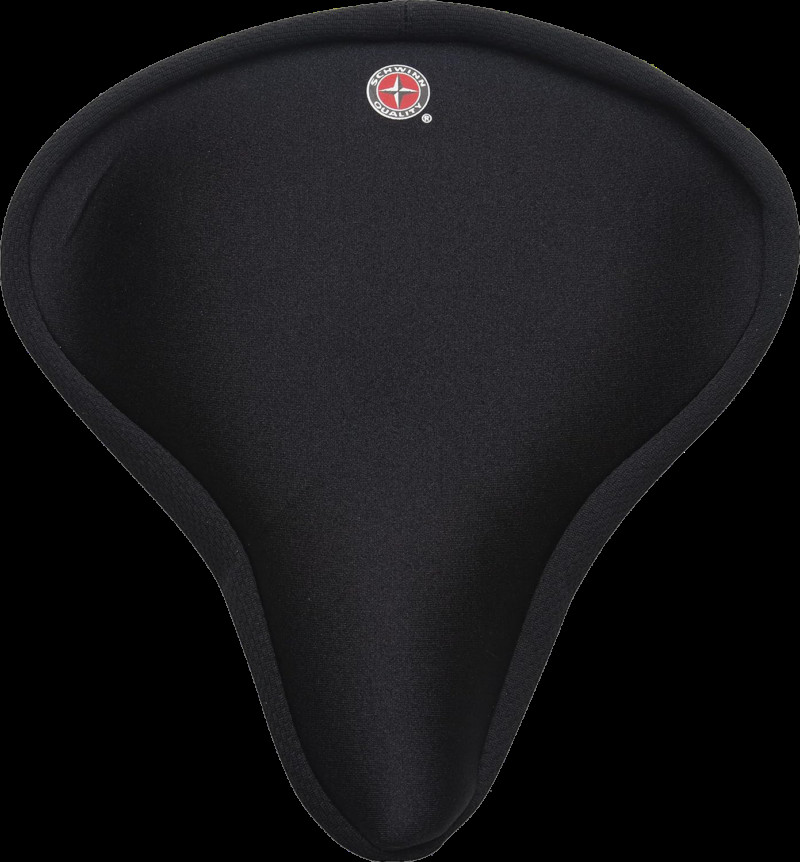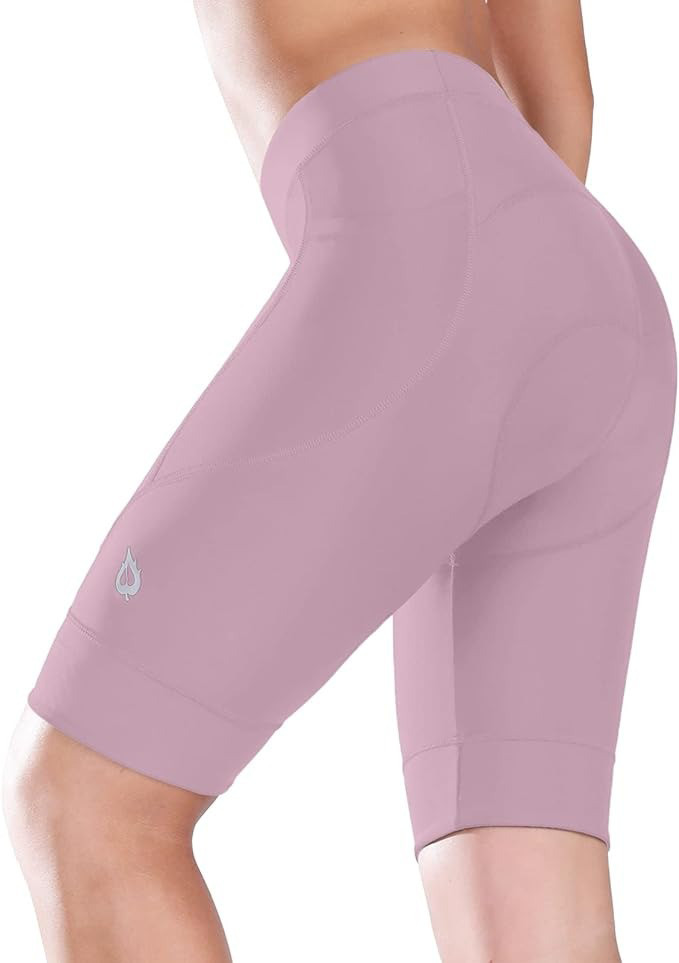If you’ve found yourself wincing after your first few Peloton rides, wondering why the Bike Seat is so uncomfortable, you’re definitely not alone. Many beginners, myself included, have experienced the initial shock of bike seat pain. When I eagerly set up my new Peloton Bike+, the dream of enjoying workouts was quickly overshadowed by a very literal pain in the butt.
I know the feeling of defeat after peeling yourself off the saddle, questioning if this whole cycling thing is for you. But don’t give up just yet! Before you consider swapping your bike for a treadmill, let me share my journey from a painful start to actually enjoying my rides. Consider this your guide to understanding bike seat discomfort and finding solutions, so you can go from “ouch!” to “on track!” with your fitness goals.
The Initial Discomfort: It’s Not Just You
The arrival of my Peloton Bike+ was exciting. I was ready to dive into the world of indoor cycling and experience those high-energy classes everyone raves about. I envisioned myself effortlessly gliding through workouts. However, reality hit the moment I sat on the bike seat. Within seconds, excitement turned into sharp discomfort. It felt less like a cushioned seat and more like an instrument of torture!
This wasn’t entirely unexpected. I’d heard whispers about bike seat pain, but I perhaps underestimated just how intense it could be. Like many beginners, I immediately questioned: “How can a bike designed for fitness, especially one as popular as Peloton, have such an uncomfortable seat?” It seemed counterintuitive to the whole idea of enjoying a workout.
Understanding Why Bike Seats Can Be Uncomfortable
Bike seat discomfort is a common complaint, especially among those new to cycling. Several factors contribute to this issue, and understanding them is the first step to finding relief. Here are some key reasons why your bike seat might be causing you pain:
- New to Cycling: If you’re not accustomed to cycling, your body simply isn’t used to the pressure a bike seat applies to your perineum and sit bones. Your body needs time to adapt to this new sensation. Think of it like breaking in new shoes – it can be uncomfortable at first, but gets better with time.
- Seat Design Mismatch: Bike seats aren’t one-size-fits-all. They come in various shapes, widths, and padding levels to suit different body types and riding styles. The stock Peloton seat, while designed to be generally suitable, might not be the right fit for your individual anatomy. A seat too narrow or too wide can lead to pressure points and discomfort.
- Insufficient Padding: While more padding might seem like the obvious solution, too much soft padding can actually increase pressure and chafing over longer rides. However, some riders do find the standard Peloton seat lacking in initial cushioning, especially for longer sessions.
- Incorrect Riding Position: Your position on the bike significantly impacts how your weight is distributed on the seat. If you’re sitting too far forward or back, or if your seat height is incorrect, you can put excessive pressure on sensitive areas. Proper bike fit is crucial for comfort and efficiency.
- Individual Sensitivity: Pain is subjective. What feels like mild pressure to one person can be significant discomfort to another. Individual variations in anatomy and nerve sensitivity play a role in how you perceive bike seat pressure.
- Lack of Saddle Break-in: Bike saddles, even those made of synthetic materials, often require a break-in period. As you ride, the saddle can subtly mold to your body shape, becoming more comfortable over time. New riders haven’t had this break-in period.
- Improper Bike Setup: Seat height, fore/aft position, and handlebar height all contribute to your overall riding posture and comfort. An improperly adjusted bike can exacerbate seat discomfort. A seat that’s too high, for example, can cause you to rock on the saddle, leading to friction and pain.
- Neglecting Warm-up: Just like any workout, warming up before cycling is important. A proper warm-up increases blood flow and prepares your body for exercise, potentially reducing initial discomfort. Stretching can also improve flexibility and comfort on the bike.
- Inappropriate Clothing: Wearing regular athletic wear or, even worse, cotton underwear, can contribute to chafing and discomfort. Cycling shorts are designed with minimal seams and often have padding (chamois) to reduce friction and cushion pressure points.
- Potential for Saddle Sores: Prolonged pressure and friction, especially without proper precautions, can lead to saddle sores – painful skin irritations or even infections. Preventing saddle sores is crucial for consistent and comfortable cycling.
My Quest for a Comfortable Ride
Determined to make my Peloton experience enjoyable, I embarked on a mission to solve the bike seat pain problem. The thought of returning the bike crossed my mind – after all, what good is a high-end exercise bike if it’s too painful to use? But I wasn’t ready to give up on Peloton just yet.
My sister, who had tried a different brand of exercise bike previously, had warned me about seat discomfort. She suggested I might be too sensitive for cycling. While her words echoed in my mind, I decided to explore solutions before throwing in the towel.
Online research led me to the treasure trove of experiences and advice within the Peloton community on Reddit. It was reassuring to find countless others grappling with the same issue. The Reddit threads highlighted a few key remedies: padded cycling shorts, gel seat covers, and fine-tuning the bike’s setup.
Investing in Comfort: Padded Shorts and a Gel Seat Cover
Reasoning that a small investment in comfort was worthwhile to salvage my Peloton experience, I quickly ordered two pairs of Baleaf padded cycling shorts and a Schwinn gel bike seat cover from Amazon. The padded shorts promised extra cushioning and support, while the gel seat cover aimed to soften the seat itself and reduce pressure.
The arrival of these comfort-enhancing accessories was met with anticipation. I eagerly slipped on the gel seat cover and donned the padded shorts, ready to test them out. The difference was immediately noticeable. The added padding from both the shorts and the cover made even a short ride significantly more bearable. While I was still somewhat tender, the cushioning provided welcome relief and a glimmer of hope. It was clear that these accessories were a step in the right direction, but I suspected further adjustments were needed for lasting comfort.
Fine-Tuning Bike Fit for Enhanced Comfort
The online Peloton community and even Peloton’s own resources emphasized that bike fit was just as crucial as seat accessories. The discomfort wasn’t solely about the seat itself; it was also about how my body interacted with the bike. I turned to Peloton’s bike fit guides and videos, watching them multiple times to ensure I understood the adjustments.
I began methodically readjusting the seat height, fore/aft position, and handlebar height. It was a process of trial and error, making small tweaks and testing the feel. Gradually, I started to find a configuration where the pressure on my sensitive areas lessened. It wasn’t an instant fix, but with each adjustment, I felt closer to a comfortable riding position.
The Power of Persistence: A Friend’s Simple Advice
Amidst my adjustments and accessory purchases, a conversation with my friend Nina proved invaluable. Sharing my bike seat woes, I learned that she was a seasoned spinner. She reassured me that initial seat discomfort was incredibly common for beginners. Her advice was simple yet profound: “Just ride a few minutes a day. It will get easier over time.”
Taking Nina’s advice to heart, I started incorporating short daily rides into my routine, even when the seat was still somewhat uncomfortable. The padded shorts and gel seat cover made these short rides manageable, and I was determined to persevere. The 30-day return window for the Peloton loomed, adding a bit of urgency to my quest for comfort. I needed to know if I could make it work before the return period ended!
From Pain to Progress: The Transformation
As I consistently rode, even for just a few minutes each day, a remarkable shift occurred. The discomfort gradually diminished with each ride. By the third day, my body began to adapt. What had initially been a painful ordeal was slowly becoming a normal, almost painless part of my day. The combination of padded shorts, the gel seat cover, and bike adjustments had transformed my Peloton Bike+ from a source of pain into a fitness tool I could actually use and even enjoy!
The initial struggle felt like a distant memory. I even started riding without the padded shorts occasionally and found it perfectly comfortable. Beyond just comfort, I began to experience the positive physical changes I had hoped for. My endurance improved noticeably, those dreaded feelings of exhaustion after just a few minutes faded, and I felt more energized overall.
Essential Tips for New Peloton Riders to Conquer Bike Seat Discomfort
For anyone starting their Peloton journey or currently battling bike seat pain, here are some key takeaways and tips based on my experience:
- Don’t Get Discouraged: Initial discomfort is incredibly common. It’s not a sign that you’re not cut out for cycling. Persistence is key – give your body time to adapt.
- Explore Comfort Solutions: Investigate accessories like padded cycling shorts and gel seat covers. These can make a significant difference in cushioning and pressure relief.
- Master Bike Fit Adjustments: Experiment with seat height, fore/aft position, and handlebar adjustments. Even small tweaks can have a big impact on comfort. Utilize Peloton’s resources and videos to guide you.
- Seek Community Wisdom: Connect with the Peloton community online or in person. Experienced riders can offer valuable tips and support. Don’t hesitate to ask for advice!
- Embrace Gradual Progression: Start with short, frequent rides and gradually increase duration as your comfort improves. Consistency is more effective than pushing yourself too hard too soon.
- Consider a Different Bike Seat: If accessories and adjustments aren’t enough, explore replacing the stock Peloton seat with a different model. Bike shops often have knowledgeable staff who can help you find a seat that’s better suited to your anatomy.
- Listen to Your Body: Pay attention to pain signals, but differentiate between initial discomfort and sharp, persistent pain. Don’t push through severe pain, but understand that some initial adjustment is normal.
- Proper Cycling Apparel: Invest in quality cycling shorts. The padding and seamless design are specifically engineered for cycling comfort.
Finding Joy in the Ride: Peloton as a Fitness Companion
Today, my Peloton Bike+ is a regular part of my fitness routine, used several times a week. This is coming from someone who has never considered themselves a fitness enthusiast and has actively disliked working out in the past! The sense of accomplishment after each ride is genuinely rewarding, and I often share my progress with my sister, who provides encouragement and support. Knowing I’m investing in my health and well-being brings a sense of satisfaction.
Final Thoughts: Comfort is Achievable
Starting a new fitness endeavor often comes with challenges, and bike seat discomfort is a common hurdle for new cyclists. But it’s not an insurmountable one. If your bike seat hurts, know that you are not alone and there are effective solutions. With a combination of determination, research, and a willingness to experiment with adjustments and accessories, you can transform bike seat pain into a comfortable and enjoyable cycling experience. Embrace the journey, and you’ll be well on your way to a healthier and happier you, enjoying every ride.
 Schwinn bike seat cover for Peloton
Schwinn bike seat cover for Peloton
Schwinn
Gel Seat Cover for Stationary Bikes
$65
Add some extra padding and get ready to ride!
 Baleaf padded cycling shorts for Peloton Bike+ spinning
Baleaf padded cycling shorts for Peloton Bike+ spinning
Baleaf
Padded Cycling Shorts
$34
More comfort for your ride!
Glamber Alert may earn commissions from purchases made through these links. Learn more.

